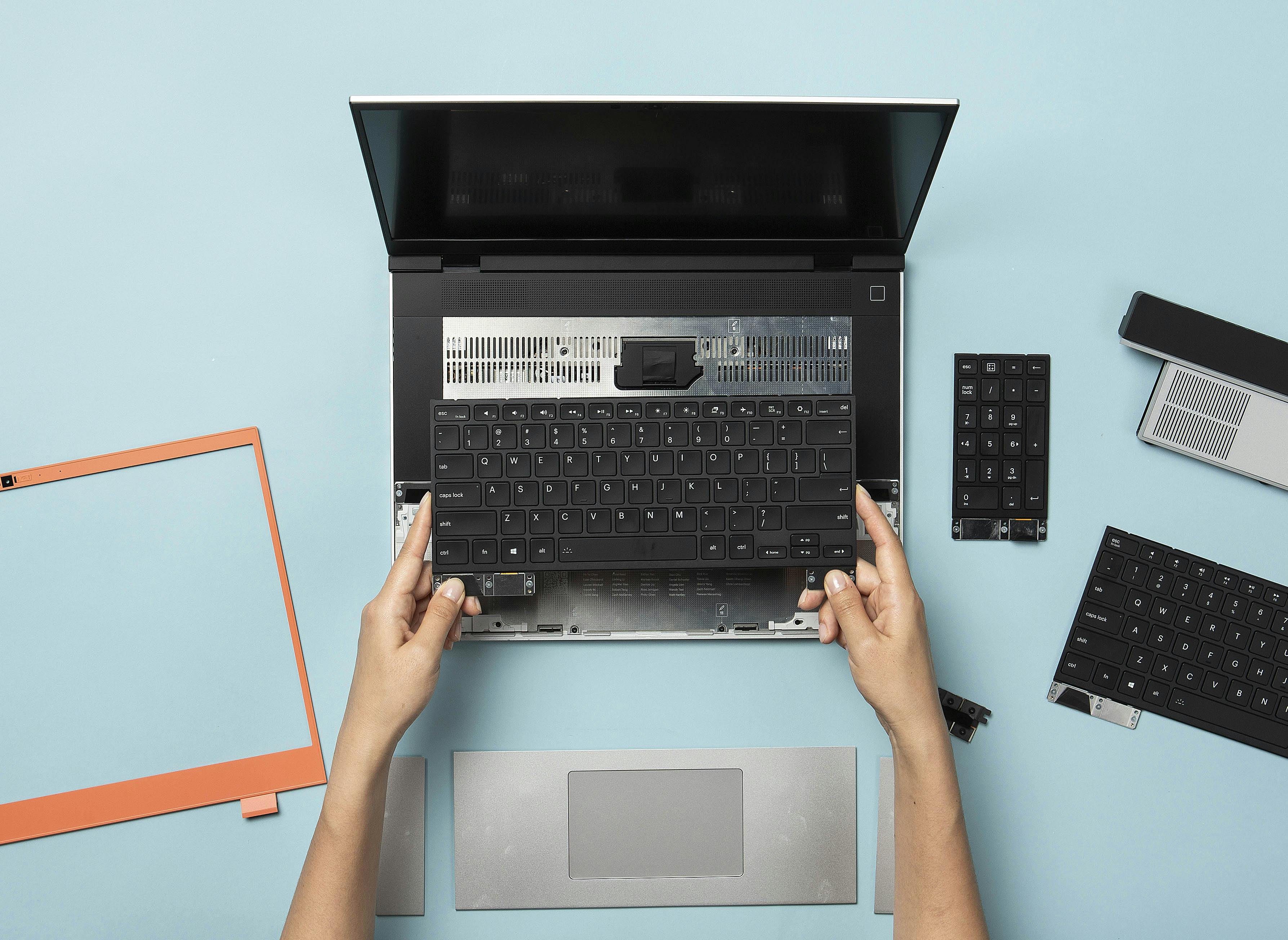Reduce, Reuse, Repair, Recycle

“Reduce, Reuse, Recycle” is a philosophy we believe in deeply, but there is a variant we like even more: “Reduce, Reuse, Repair, Recycle.” The sequence within this is critical: “Reduce” is the most impactful action, and each subsequent step is a fallback. Reuse what you can’t reduce, repair what you can’t reuse, and recycle what you can’t repair. Recycling should only be the last resort after we’ve failed to find a way to enable longevity. However, it’s the action that gets the most attention from big electronics brands, likely because it is the one that doesn’t require changing product designs or business models. At Framework, we start at reducing instead:
Reduce
The single best way to reduce the environmental impact of electronics products is to use them for longer, mitigating the need to manufacture more of them. A surprising and little known fact is that vastly more energy is used in manufacturing a typical laptop than is consumed across its entire lifetime of usage. Extending the number of years you can use a product spreads that initial manufacturing impact across a broader span of time. Reducing the number of devices that need to be manufactured also reduces waste. The United Nations Global E-waste Monitor 2020 report estimates that by 2030, the amount of global e-waste will grow to 74.7 million metric tons. Shrinking that pile requires building less and using products for longer. We enable that by designing for longevity from the start, with products that are easy to repair, customize, and upgrade to work for you for longer.
Reuse
Beyond making sure the system itself lasts, we focus on designing the core modules to be re-usable outside of the laptop. Framework Laptop Mainboards for example can function as standalone PCs. You can either 3D print a case for them or pick up Cooler Master’s Mainboard Case to turn a Mainboard into a small form factor computer. By open sourcing documentation and reference designs, we’ve also enabled the community to build their own interesting projects and products that reuse modules, like tablets, cyberdecks, and servers.
Repair
A core part of longevity is enabling repair. We do that by making every part of products individually available in the Marketplace, and by providing easy-to-follow step-by-step guides on performing replacements. The only tool you need for any repair is the Framework Screwdriver that we include in the box with the laptop. We’ve also designed for repairability from the start, and the Framework Laptop is one of the few products that score a perfect 10/10 on iFixit’s repairability scale. For deeper electronics repairs, we also make schematics available to repair shops.
Recycle
Finally, at the end of the line, when an item can’t be reused or repaired, it’s critical to ensure that the often rare and occasionally damaging materials that comprise it can be safely recycled rather than released into the environment. The aspiration around recycling is ultimately to get to a fully circular supply chain, where material from retired devices can get reprocessed directly into new ones. We have a long way to go to reach that goal as an industry, but we’re seeing encouraging work from suppliers like Covestro, who we use for many of our post-consumer-recycled polycarbonate plastics. To help accelerate closing the loop, we also recently released a “Where can I recycle Framework products?” article pointing to local responsible recyclers in the regions we sell products in. We’ll continue to update this list as we engage additional recycling partners.
We hope that this philosophy spreads across more of consumer electronics, and we’re looking forward to building a more planet-friendly industry together.
